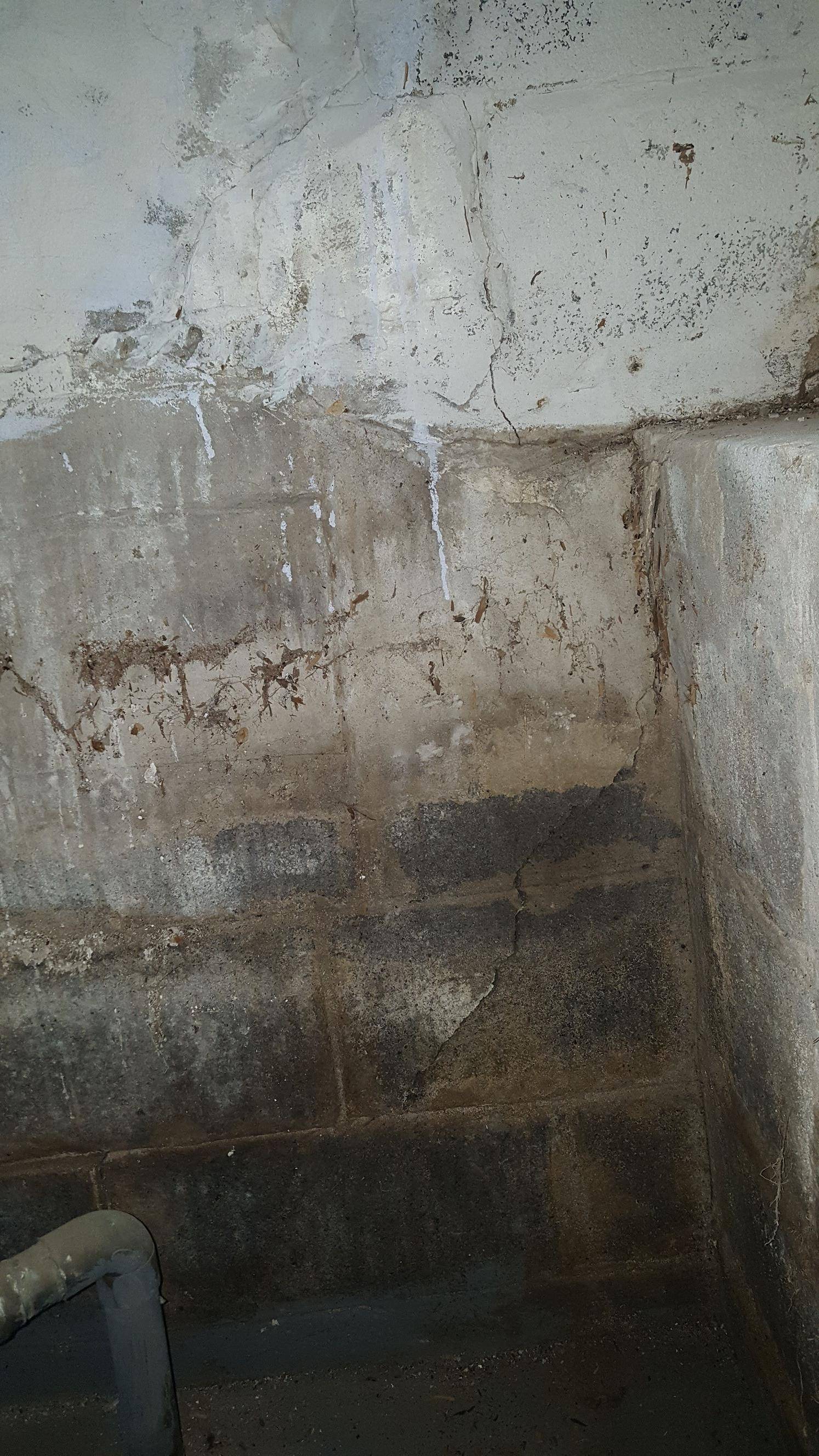A couple of the concrete block in my basement wall are cracked (diagonal crack on the bottom right of the photo in the "unfinished" blocks).
The house is a 1920s duplex in Washington DC. It originally, I think, had a two story sleeping porch which has since been fully enclosed. These cracks are under the former porch on the corner of the common wall and the outside. The outside wall has concrete steps so I cannot see if the crack goes all the way through. The grade is right about at the top of the extra row of blocks on the right.
This area we think was a former laundry room and may have been dug out and under pinned by the former owner. I can see two piers supporting the porch, and I am assuming there is a third pier somewhere near this wall.
Is this crack something to worry about or does it just need to be sealed? We are planning on turning the space into a mechanical room for a new HVAC system.


